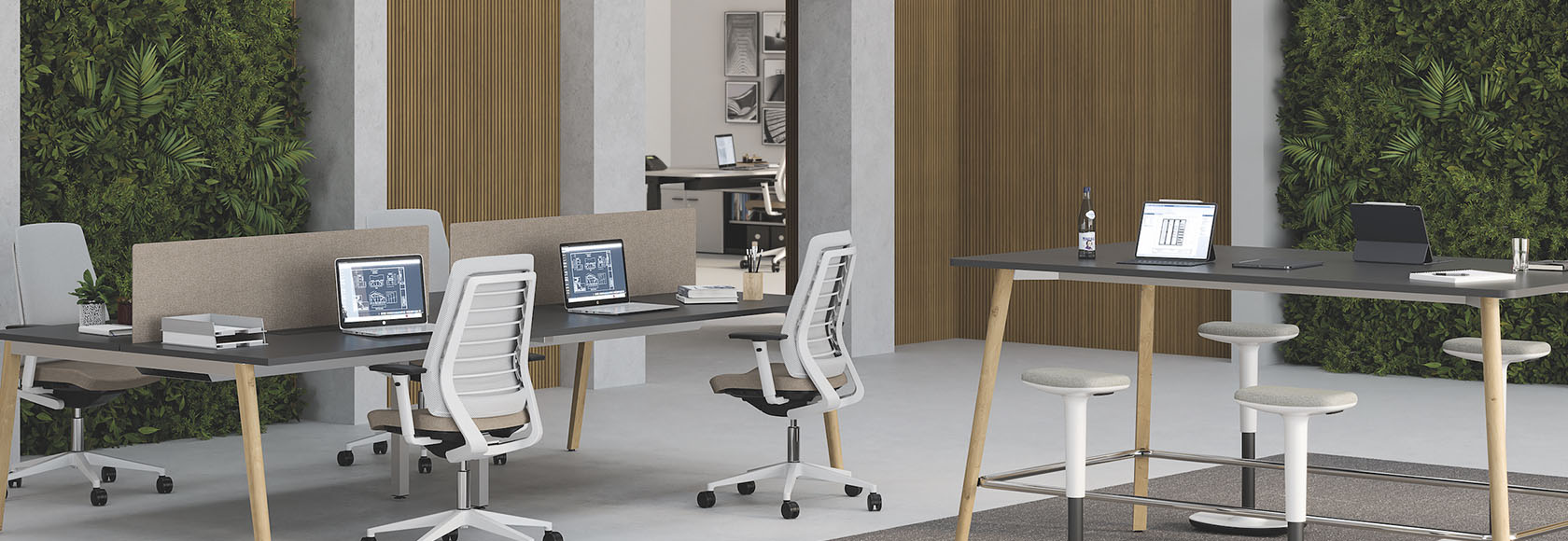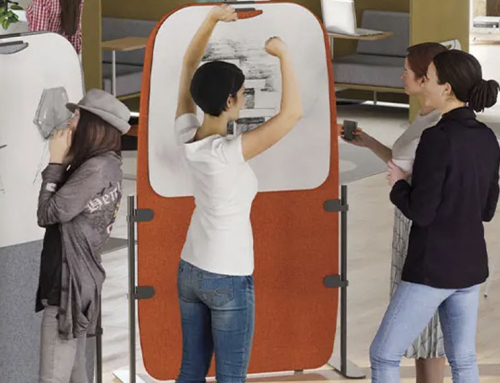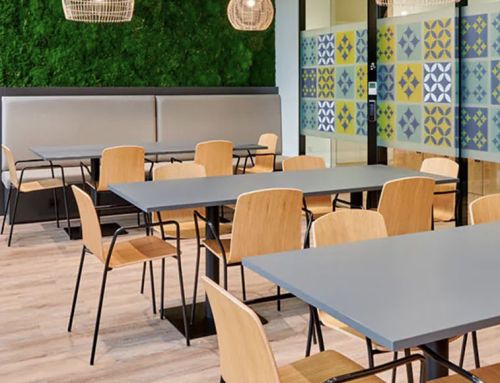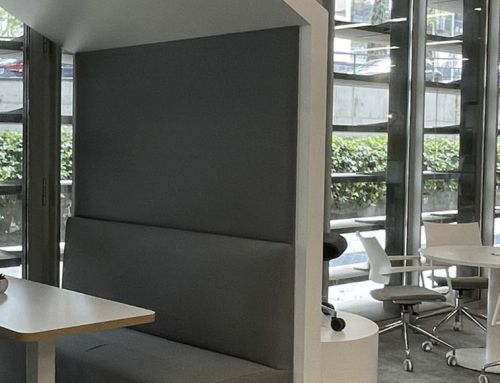Furnishing an office is much more than just fitting a number of people into a certain number of square metres.
How do we choose the best furniture to furnish an office? The choice depends not only on economic factors, but also on the company’s culture, technological requirements, work dynamics and the flexibility imposed by the new competitive environment.
It should not be forgotten that the office is the organisation’s showcase. It is its external image, and a means for employees to identify with the company and feel more motivated. Therefore, the aesthetic design of office furniture is essential to furnish a modern office. In this sense, its customisation is a great added value.
Keys to furnishing an office
When it comes to furnishing an office, at Ofita, we start from a clear premise: the well-being of people, and from there we seek to ensure that the furniture facilitates the different ways of working in a company, whether individual or collaborative, and that it enhances the brand image.
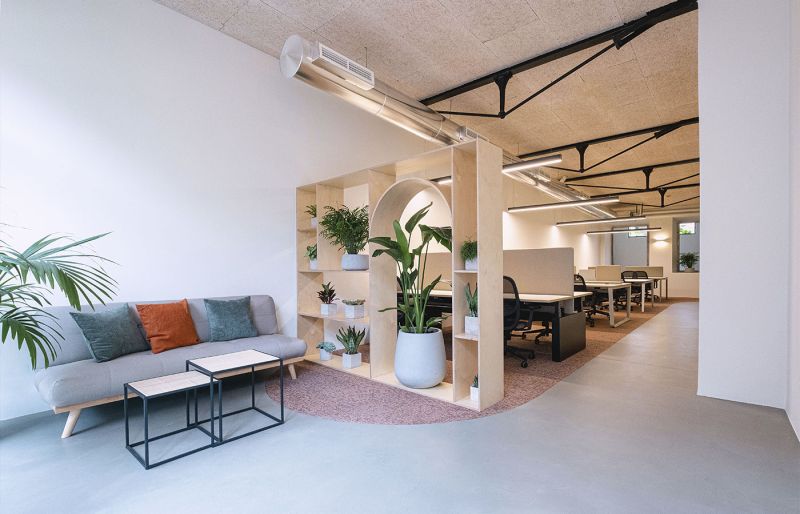
Before furnishing the office, it is necessary to analyse different factors: the culture of the company, its structure (whether it is vertical or horizontal), its communication needs (which are growing every day), its activity…
A detailed study is also carried out on which departments exist in the company, the relationship between them, what type of spaces their work dynamics require, whether teamwork is carried out, what common areas are needed…
This analysis will mark the starting point for furnishing an office as it will determine the different types of spaces that will exist in that work environment: operational areas, soft seating areas, meeting rooms…
Ofita’s “3×4=12” study describes the 12 spaces that define today’s offices. Download study
Each of these spaces requires specific furniture. Thus, for example, in an innovation area, mobile and flexible elements play a key role, while in a phone booth, the sound insulation provided by the furniture is essential.
How to furnish workstations
Every workstation must meet a number of requirements. The first is that it must be adapted to its user and his or her activity and respond to the concept of dynamic ergonomics, i.e. if people and their functions change, the office and its components must also evolve.
An ergonomic workplace, which adapts to people, prevents discomfort and illness, creates healthy psychological states and reduces absenteeism rates. Therefore, an ergonomic workspace increases people’s productivity.
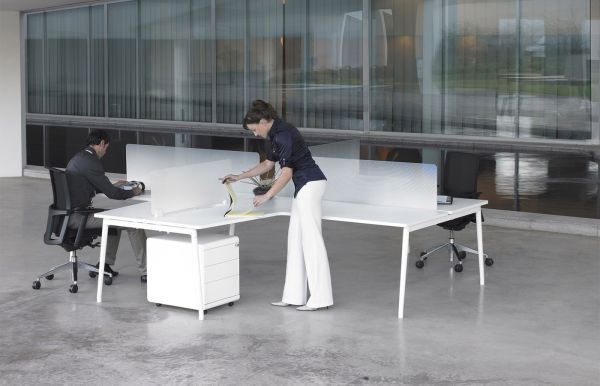
On the contrary, if it is not adequate, it can increase fatigue and discomfort; create unhealthy moods (depression, anxiety, irritability…) and different diseases.
A second golden rule is that the workstation should have enough space to move around and that the user should not be forced to adopt awkward postures because there is not enough space.
In operative office work, for some tasks, the person adopts a posture leaning on the desk and for other activities remains leaning on the back of the chair. This is another requirement that the workplace must also meet in terms of its equipment: the furniture must allow for the possibility of changing posture frequently.
5 basic elements of the workplace
First of all, it should not be forgotten that the desk must meet the specific needs of the workstation for which it is used and its user. This is why companies nowadays prefer height-adjustable office desks that allow us to adopt different postures throughout the day.
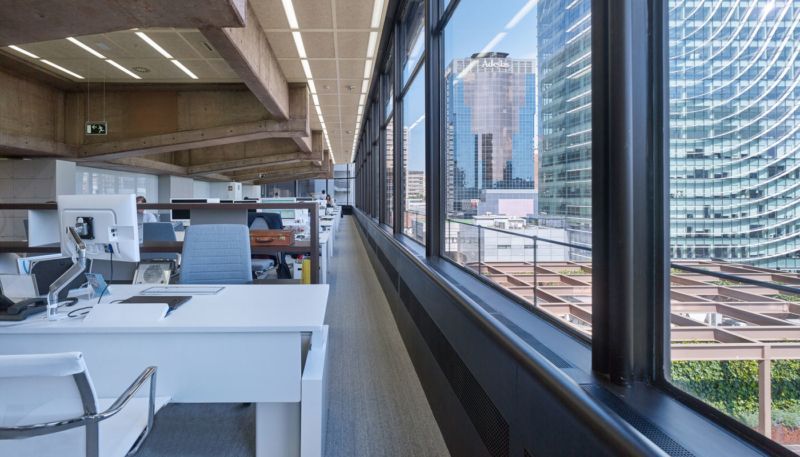
That said, the definition of a workstation starts with a detailed study of the five basic elements that make it up: the work surfaces, the structures that support them, the filing system, the chairs and the compartmentalisation of the space. The correct choice of these elements determines the suitability of a workstation for a particular person.
Work surfaces
In the past, the design of desks did not distinguish between the different activities carried out in an office, with the classic rectangular table top predominating, which was used for all types of work and for all users.
Ofita created a new concept some time ago, which it called “A surface for every function” and which means that work surfaces or desktops should be designed according to the activity carried out at each workstation and its relationship with the surrounding area.
When furnishing an office, special attention should also be paid to the dimensions of the desk.
Its surface must allow for all the elements of work: screen, input devices, equipment, material and arms and hands. The recommended minimum is 160×80 cm in the case of a rectangular desk; if a desk with a wing is purchased, it is recommended that the minimum dimensions be 100×60 cm. Free space behind the table: minimum 80 cm, recommended 115 cm.
There should be enough space under the table to be able to move around and adopt suitable postures. The minimum recommended width is 60 cm and the minimum recommended height 65 cm. The height of the table should be approximately at elbow height.
An ergonomic chair
But, without a doubt, the most important thing when furnishing an office is to have an ergonomic chair. That is to say, an office chair that adapts to its user, taking into account the variety of individuals, and not the other way around.
The main characteristic that differentiates an ergonomic chair is the position in which our back is when we are using it and that allows us to “be seated in movement“.
The chair must be provided with different adjustments (height adjustment…), as we described in this previous post.
What about the archive?
The filing elements must be made of quality materials that guarantee the highest fire resistance (such as steel) and be equipped with safety systems, such as anti-tilt systems.
When workstations are not assigned to a specific person, these files are replaced by a system of lockers, as in the image.
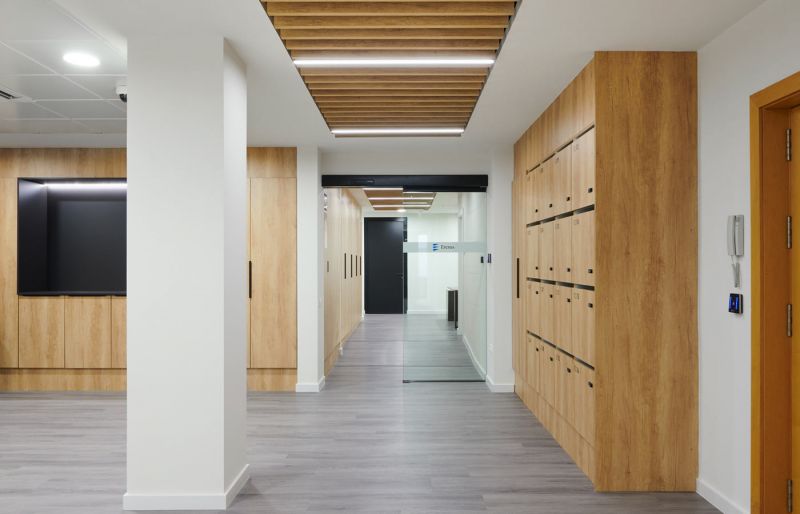
Ercros offices
Compartmentalisation
The design of an office depends on the joint analysis of a number of values, such as lighting or noise pollution, for example. The arrangement of partitioning elements (panels) helps to ensure that these values are the most appropriate for creating healthy working environments.
In this respect, when furnishing an office and defining the most appropriate type of panel for each space, four basic aspects are analysed: the level of visual insulation, the level of sound insulation, the necessary flexibility and the use of natural light. These aspects will determine the height of the panel, its material (more or less sound-absorbent), etc.
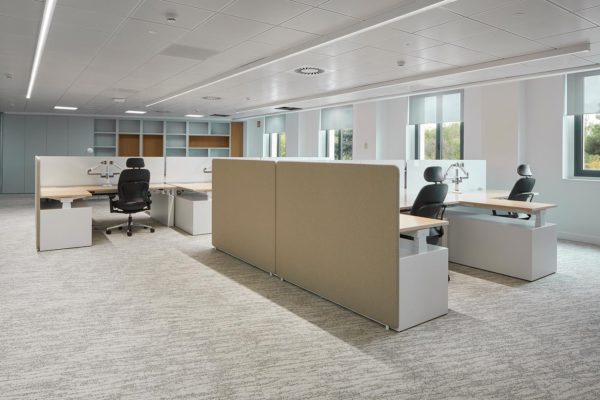
Latham & Watkins
The importance of colour in office furnishing
Every detail makes a difference when the aim is to ensure the charm of a unique workspace. Therefore, when furnishing an office, colour helps us to recreate the most appropriate environment for each circumstance.
Because of the energy they transmit, colours provoke sensations and affect our moods. Hence the importance of correctly selecting the colours that surround people and create an atmosphere.
Today, pastel colours and tones that evoke nature are very important in office interiors, as they help us to create offices that are increasingly pleasant and comfortable.
Brown and beige tones have a relaxing effect. Therefore, they fit very well in informal spaces or/and in those more social ones, where to take a break and have a coffee.
When it comes to choosing the best colour in the office, as a general rule people also choose to paint spaces in a base of neutral colours, such as white, light blue and light grey, to which a touch of colour is added. However, this is not enough to create a pleasant atmosphere. We tell you more about colour in the office in this other post.
